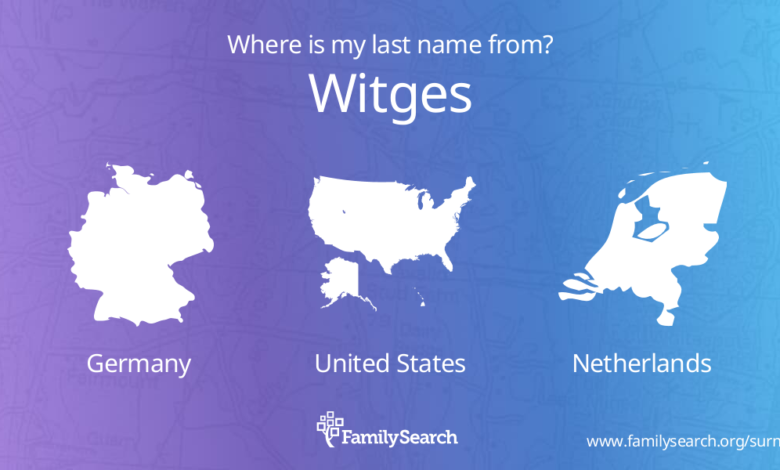A Closer Look at Famous witges Throughout History

Step into the mystical world of witges as we delve deeper into their fascinating history throughout the ages. From ancient times to modern-day, these enigmatic figures have captured our imaginations and sparked both fear and curiosity. Join us on a journey to uncover the stories of famous witches who have left their mark on history, shaping our perceptions of magic and mysticism. Let’s take a closer look at the intriguing lives of these powerful women and controversial figures who continue to intrigue us to this day.
Ancient witges: From Circe to Hecate
In the ancient world, witges held a mystique that captivated both fear and fascination. From Circe in Greek mythology to Hecate, the goddess of sorcery and crossroads. Circe was known for her enchanting spells that turned men into animals, while Hecate was revered as a powerful deity associated with magic and witchcraft.
These ancient witges were shrouded in mystery, their powers often portrayed as both alluring and dangerous. Circe’s ability to transform others with her potions and incantations symbolized the primal fear of losing control. On the other hand, Hecate’s triple form represented her dominion over earth, sky, and sea – a reflection of her influence over all realms.
Their stories continue to echo through history, reminding us of the enduring allure of magic and the supernatural. The legacy of these ancient witges lives on in our collective imagination, inspiring countless tales of sorcery and intrigue.
Medieval Witches: The witges Hunts and Persecution
As we delve into the medieval period, the image of witches takes a darker turn. The witges hunts and persecution that swept through Europe during this time were fueled by fear and superstition. Accusations of witchcraft often led to trials that resulted in harsh punishments, including imprisonment, torture, and even death.
The infamous Salem Witch Trials in 1692 serve as a stark reminder of the hysteria that gripped society. Women, in particular, were targeted as witges due to their perceived vulnerability and supposed ties to the devil. The mere suspicion of practicing witchcraft could shatter lives and communities.
Throughout history, many innocent individuals fell victim to these unfounded accusations. The legacy of medieval witch hunts serves as a cautionary tale about the dangers of intolerance and ignorance. It is essential to remember this dark chapter in our past to ensure it is never repeated again.
Modern Day witges: The Rise of Wicca and the New Age Movement
In the modern era, the practice of witges craft has seen a resurgence with the rise of Wicca and the New Age movement. These contemporary paths draw inspiration from ancient traditions while adapting to fit into our fast-paced world. Wiccans honor nature, celebrate the cycles of the moon, and embrace a belief in karma.
The New Age movement emphasizes personal growth, spirituality, and interconnectedness. It blends various metaphysical practices like crystal healing, tarot readings, and energy work. Both Wicca and the New Age movement promote self-empowerment and encourage individuals to connect with their intuition.
With social media platforms allowing for greater visibility and connectivity among like-minded individuals, modern witches are finding community online. The accessibility of information has made it easier for newcomers to explore these spiritual paths without fear or judgment.
As society becomes more accepting of diverse beliefs and practices, modern witches continue to thrive by blending tradition with innovation in their magical pursuits.
Famous Witches Throughout History:
Famous Witches Throughout History:
Joan of Arc, the fearless warrior and visionary, who defied societal norms and led armies into battle with unwavering conviction. Her courage and determination left a lasting legacy that transcends time.
Marie Laveau, the Voodoo Queen of New Orleans, known for her mystical powers and influence in the spiritual community. Her rituals and charms captivated those seeking guidance or protection.
Baba Yaga, the enigmatic Slavic folklore figure often portrayed as a fearsome witch living in a hut on chicken legs. Despite her intimidating appearance, Baba Yaga is also seen as a wise and unpredictable force of nature.
Tituba, one of the first women accused of witchcraft during the Salem Witch Trials in 1692. As an enslaved woman with knowledge of herbal remedies from her native Barbados, Tituba’s story highlights the intersection of race, power dynamics, and superstition.
These figures each bring a unique perspective to the complex history of witges throughout different cultures and eras.
– Joan of Arc
Joan of Arc, a legendary figure in history, was known for her bravery and unwavering faith. Born in the 15th century in France, she claimed to have visions from saints urging her to help Charles VII reclaim his throne. Despite facing skepticism and opposition, Joan fearlessly led troops into battle during the Hundred Years’ War.
Her remarkable leadership and military tactics played a crucial role in turning the tide of the war in favor of the French. Joan’s courage and conviction inspired many both then and now. However, her enemies eventually captured her, leading to a trial where she was accused of heresy and witchcraft.
Despite being found guilty and sentenced to death by burning at the stake, Joan’s legacy endured beyond her tragic end. She was later canonized as a saint by the Catholic Church for her extraordinary life and dedication to her beliefs.
– Marie Laveau
Marie Laveau, the Voodoo Queen of New Orleans, is a legendary figure shrouded in mystery and intrigue. Known for her powerful spiritual abilities and influence over the community, she was a force to be reckoned with during the 19th century. Marie’s reputation as a healer, seer, and practitioner of magic earned her respect and fear from those around her.
Rumored to hold rituals by St. John’s Eve bonfires and graveyards, Marie Laveau captivated believers and skeptics alike with her mystique. Her presence loomed large in New Orleans society, where she was sought out for guidance and assistance in matters both mundane and supernatural. Despite facing prejudice due to her race and beliefs, Marie persevered as a pillar of strength within the Voodoo community.
To this day, Marie Laveau remains an enigmatic figure whose legacy continues to fascinate historians and practitioners of the occult alike.
– Baba Yaga
Baba Yaga, the enigmatic and mysterious witch from Slavic folklore, is a figure shrouded in both fear and fascination. Described as an old hag with iron teeth and a penchant for flying around in a mortar and pestle, Baba Yaga is not your typical fairy tale witch.
Her character is complex, often portrayed as both a wise crone who imparts wisdom to those who seek her out and a fearsome antagonist who devours those who fail her tests. In some stories, she is seen as a guardian of the forest, while in others she embodies chaos and unpredictability.
Despite her terrifying reputation, Baba Yaga’s role in folklore serves as a reminder of the dual nature of magic – it can both harm and heal depending on how it is wielded. She challenges our perceptions of good and evil, inviting us to delve deeper into the complexities of human nature.
– Tituba
Tituba is a figure shrouded in mystery and intrigue, known for her involvement in the infamous Salem witch trials of 1692. She was one of the first women to be accused witges of witchcraft during this dark period in American history.
Originally from Barbados, Tituba was enslaved by Reverend Samuel Parris and his family, making her vulnerable to suspicion and accusations. Her ethnicity and cultural background added complexity to the hysteria surrounding witges at that time.
Tituba’s confessions under duress played a significant role in fueling the witges hunt frenzy that gripped Salem. Some believe she may have fabricated stories to appease her captors or protect herself from further harm.
Despite Tituba’s pivotal role in the trials, much about her life remains unknown. Her legacy serves as a reminder of the injustices faced by marginalized individuals caught up in historical events beyond their control.
Controversial Figures: Aleister Crowley and Anton LaVey
Let’s delve into the realm of controversial figures in the world of witchcraft and occultism. Aleister Crowley, often dubbed as “The Great Beast,” was a British occultist known for his provocative teachings and involvement in ceremonial magic. His esoteric practices and writings have sparked both admiration and criticism, making him a polarizing figure in history.
On the other hand, Anton LaVey, founder of the Church of Satan, gained notoriety for his promotion of atheistic Satanism. LaVey’s Satanic Bible challenged traditional religious norms and emphasized self-indulgence over submission to deities. While some view him as a rebel against societal constraints, others see him as promoting dangerous ideologies.
Both Crowley and LaVey left a significant impact on modern occultism by pushing boundaries and challenging conventional beliefs. Their controversial personas continue to fascinate and provoke discussions among those interested in exploring the darker side of spirituality.



